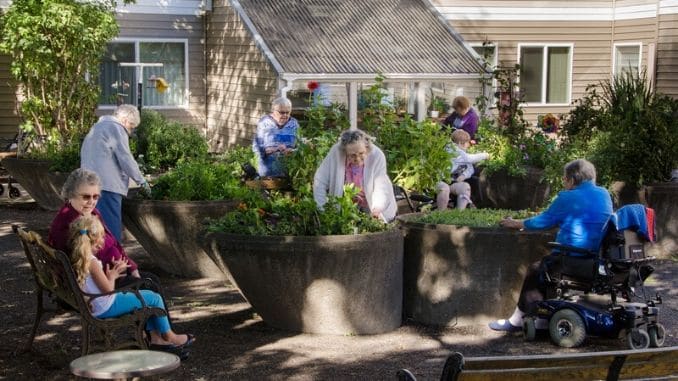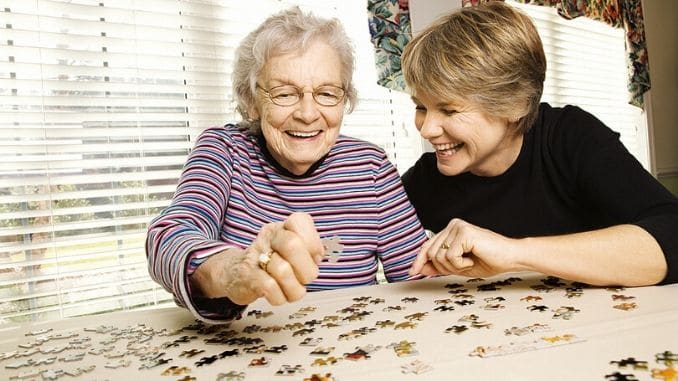
Placing your parent or an aging loved one in an assisted living home is a serious undertaking. Deciding which facility to choose is of crucial importance. It can mean the difference between your loved one enjoying his or her golden years in a peaceful environment or dreading the start of each new day.
When you’re looking for the best living situation for an infirm adult, there are several factors to consider. Because your loved one is an individual with unique interests and needs of his or her own, choosing an assisted living home should be done with careful consideration. Here are some tips to help you find the best facility for your aging loved ones.
Familiarize Yourself With the Assisted Living Lingo
Convalescent home, retirement center, nursing home, and assisted living facility ― these terms are erroneously interchanged and used incorrectly all of the time. However, the names of these facilities have important meanings and are indicative of the offerings found inside:
- Assisted living home: Assisted living homes, also called assisted living facilities, offer residential options for seniors who enjoy their independence, but need a little help with certain daily living tasks. Assisted living homes offer full-time staff that provides security and assistance. However, these homes are not intended for adults who require 24-hour individualized care.
- Convalescent home: A convalescent home is normally used when an individual is recovering from an illness or surgery and requires full-time care and monitoring for a measurable amount of time. Moreover, convalescent homes offer on-site medical staff 24 hours a day. People who stay in convalescent homes will normally return to independent living in their own homes when they are strong enough.
- Nursing home: Nursing homes are ideal for people who require more care than an assisted living home can provide. Moreover, medical professionals are on staff in nursing homes to deliver specialized care to residents as needed.
- Retirement community: A retirement community is usually an apartment complex, a group of townhomes or single-family homes that have a minimum age requirement for their residents. Folks who live in a retirement community can generally care for themselves but often have in-home caregivers stop by regularly. Moreover, some retirement communities feature a clubhouse with community gatherings, game nights, and shared meals.
- Skilled nursing facility: A skilled nursing facility is similar to a nursing home, in that they employ 24-hour medical staff. People who don’t require hospitalization, but still can’t care for themselves at home often stay in skilled nursing facilities. Some individuals stay for short periods of rehabilitation while others stay for longer periods of time when they need ongoing skilled care.
Ask Your Loved One for Some Guidance
Set aside some time to talk with your loved one regarding his or her particular desires. Keep in mind that this conversation may be difficult and possibly emotional. Moreover, be sensitive to the fact that your loved one, who may have been accustomed to living in a quiet private home up to this point, could be uneasy or fearful about the prospect of moving into a new community full of unfamiliar faces.
Encourage your loved one to share his or her concerns with you. Ask about his or her most important priorities when it comes to an assisted living home. Moreover, perhaps your aging loved one would like to live in a place with lots of social activities on the calendar or a dining plan that includes vegan options. Moreover, maybe access to a kitchenette and exercise room is important or the ability to bring along a pet.
Try to get a sense of what’s important to your loved one first, so that you’re fully informed as you begin searching for a place that best fits his or her needs. In every way that is possible, include your loved one in the decision-making process.
Consider the Specific Health Needs of Your Loved One
Avery Comarow, the health ranking editor of U.S. News and World Report, said, “Does dad or [Grandpa] have a special need ― perhaps a condition like Alzheimer’s disease? Some homes have a wing for Alzheimer’s patients. Others don’t take Alzheimer’s patients at all.”
The need for an oxygen tank, memory care, tube feeding or other special medical help could require more care than certain assisted living facilities can provide. If your loved one currently needs or will soon need, any kind of daily skilled nursing care, seek out a facility that offers such services.
Look for Assisted Living Facilities That Are Close to Friends and Family
What to Look for in an Assisted Living Home?: While regular social interaction with other mature residents is a huge benefit to life in assisted living homes, frequent visits from family and friends are generally more meaningful to your loved one. Moreover, think of the people who will most likely come to visit your aging loved one and search for nursing homes within proximity to those friends and family members.
Narrow Down Your Options With Online Reviews and Reporting Data
After you’ve made a list of nearby assisted living facilities that provide the care your loved one needs, take some time to dig up information about each place online.
Try the following sites to learn more about assisted living homes on your list:
- Yelp: It’s a popular review site that is operational in at least 20 countries throughout the world, including Canada, the United States, the United Kingdom and Japan. In the same way that you can search for an honest car mechanic, you can search for clean and comfortable assisted living homes. Keep in mind that although Yelp screens their reviews diligently, there are still companies that manage to buy positive reviews or fabricate negative reviews about their competitors. Use this service as a helpful tool, but don’t rely on it solely when making your assisted living decisions.
- Medicare.gov: If you’re in the U.S., Medicare has an excellent database of assisted living homes throughout the country. Moreover,heir site rates each facility based on their recent state health inspections, adequate staffing and the overall quality of the care provided to residents.
- CIHI.ca: In Canada, the Canadian Institute for Health Information provides data and reports about elder care in assisted living facilities throughout the country.
- Facebook: Don’t forget about the things people post on social media. Log into your Facebook account and enter the name of each facility in the search box. Moreover, these days, folks are quick to call out indiscretions on social media right away. Facebook is a good place to look for complaints.
Furthermore, there are more review sites online that can help you in your search. Type, “assisted living facility + reviews + the name of your city” into your search engine and browse the net. If you have a few places in mind, search the company names to see what people are saying about them online. If you find enough suspect information or failed health inspections, cross the facility off of your list and save yourself an in-person visit.
Go to Their Front Desk and Schedule a Tour in Person
While it would be easier to schedule a tour over the phone, popping in unexpectedly has its benefits. You’ll be able to see how the place runs when they aren’t expecting potential clients to visit. Moreover, comarow advised, “After you’ve reviewed the information and made a list of homes that might be possibilities, you’ll need to visit. Spending time in a home will reveal things that numbers, stars, and state reports never will. Look around ― our residents up and about or are most of them in bed and staring at the TV? Are call lights blinking and nobody answering? Visit more than once at different times and on different days of the week. Moreover, talk with the staff and visitors and be sure to get specific answers if your loved one has unique needs.”
Stopping by unannounced may help you weed out facilities that are operating substandardly.
Moreover, for the assisted living homes that remain on your list after your drop-in visit, schedule a time when you can come in and have a formal tour.
Have Others Weigh In
The more eyes, the better the decision will be. When you’ve scheduled the tours, bring along other close friends or helpful family members to look around and ask questions. Of course, the future resident should come along if he or she is able as well.
During the tour, ask specifically to see every part of the facility. Moreover, be sure to walk through the kitchen and dining areas, recreation rooms and any skilled nursing areas. Also, talk to the staff in all departments to get a feel for the atmosphere. Ask questions that come to mind during the tour ― even things that you may have already read in a brochure or on their website. In-house procedures may change more rapidly than pamphlets or websites can be updated.
Ask about what kind of background checks are required of staff members and what level of nursing care is available to the residents. Look at the workers you encounter. Do they seem overburdened or hurried? Are they kindly interacting with residents? If they don’t seem to have time to speak with you or are not acknowledging the residents, the facility may be understaffed.
Moreover, ask to see the actual living quarters for potential residents. Is everything in good repair? Is there plenty of natural light for your loved one? Check to see if residents are allowed to bring furniture from home. Look around for cleanliness and organization. Do you see marked exits and fire extinguishers handy?
Take a walk around the outside of the facility. Look for adequate outdoor areas that residents can enjoy during nice weather. Moreover, ask about policies regarding residents coming and going from the facility.
Finally, as you’re finishing up the tour, ask to take home a copy of any contract or agreement that a resident or family representative is required to sign. Also, ask for a copy of the fee schedule and rules of the facility.
Use a Checklist of Questions to Ask During Your Tour
Here’s a list of pertinent questions that you’ll want to remember to ask while you’re touring the facilities.
| Questions to Ask During a Facility Tour: Checklist |
| ▢ What is on the dining menu this month? |
| ▢ What kinds of options are offered for dietary preferences? |
| ▢ How often are meals and snacks served? |
| ▢ Can residents take food back to their rooms? |
| ▢ Can residents have guests come and eat with them? |
| ▢ Are residents recognized on their birthdays? If so, how? |
| ▢ What kind of background check is required for staff in this facility? |
| ▢ How often is a registered nurse available to residents? |
| ▢ Is there a dietician on staff? |
| ▢ Can residents continue to see their own physicians? |
| ▢ How are services approved and billed? |
| ▢ Can residents own small pets or have pet visitation? |
| ▢ Are residents permitted to bring furniture from home? |
| ▢ Are there any activities that are not allowed inside resident rooms? |
| ▢ What are visiting hours and policies regarding visitors? |
| ▢ Are religious services held on-site? If so, what kind? |
| ▢ Is pastoral care available for residents? |
| ▢ What kind of recreational activities are planned for this month? |
| ▢ Are group outings or transportation services available for residents? |
| ▢ What kind of exercise programs are offered to residents? |
| ▢ Can residents come in and out of the facility as they please? |
One of the most important decisions that a person may ever need to make, for a parent or aging loved one, is how to provide the best end-of-life care. Use our checklist and be diligent with your research so that you can find the right placement for your aging loved one.
Having trouble with balance as you age? Make sure to check out our Balance Training Handbook, here!








